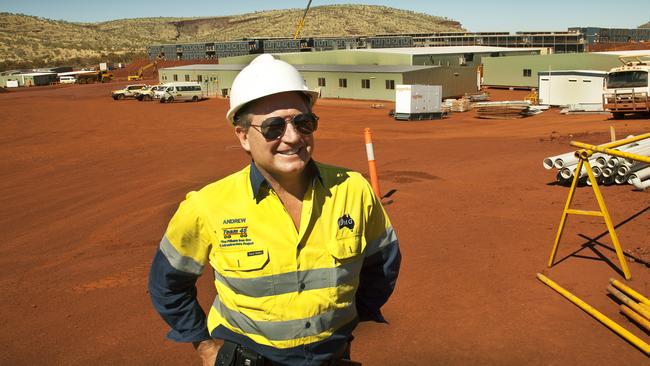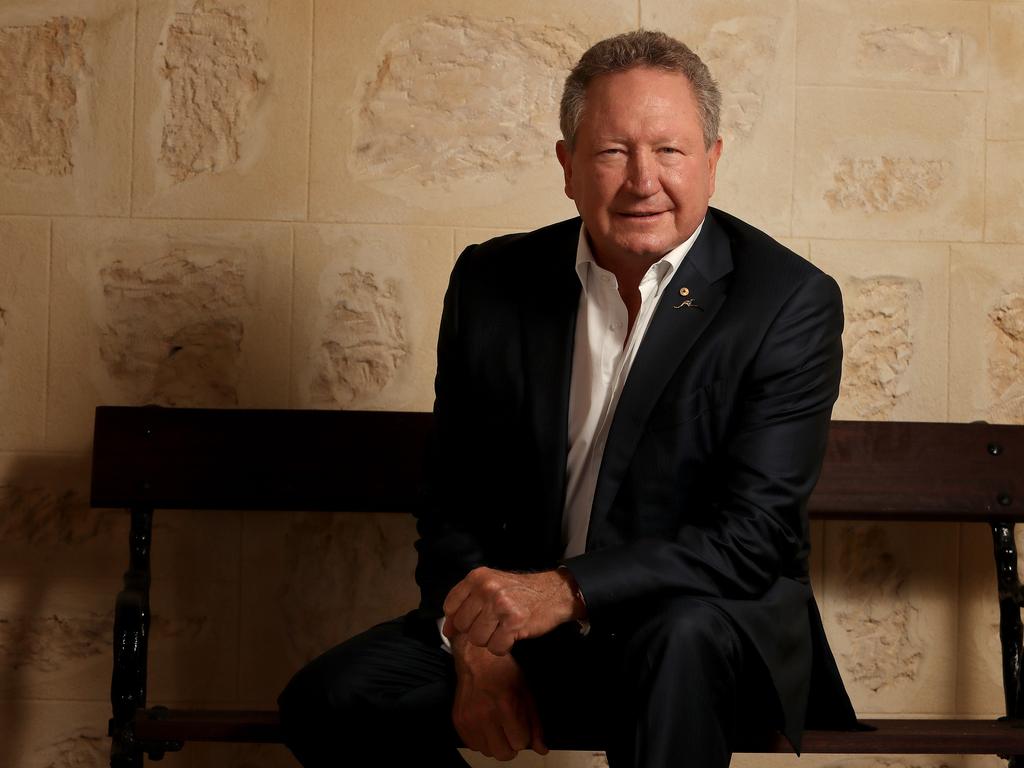‘In a different league’: Andrew Forrest’s hydro vision wins PNG friends
PNG State Enterprises Minister Sasindran Muthuvel fired up his laptop and was greeted on a video call by Andrew “Twiggy” Forrest.

PNG State Enterprises Minister Sasindran Muthuvel fired up his laptop a few months ago and was greeted on a video call by Andrew “Twiggy” Forrest. Dressed in hi-vis, Forrest had a plan for the Pacific nation so big the minister wasn’t sure he was serious. He also had no idea who Forrest was.
“He was in a mining uniform so I didn’t realise he’s the major shareholder and chairman of the company Fortescue,” Muthuvel tells The Weekend Australian.
“I went and briefed the PM and when I did I still didn’t know who I was talking to and whether the person was credible or not credible. Of course, once we did our due diligence, we got very good feedback and invited him to come to PNG to see the potential for himself.”
While some assumed the iron ore billionaire was on a hunt for PNG’s gas or mining riches, his actual target was the country’s vast river and water resources.
But unlike other companies in the past, including Origin Energy, which had eyed PNG’s hydro resources to export electricity back to Australia, Forrest’s pitch was to keep all hydro supplies in-country to power steel, copper and chemical industries such as fertiliser or ammonia plants. Sanjeev Gupta is also a high-profile champion of green steel, a model that aims to develop heavy industry power by renewable energy.
“What was interesting to me is many investors come to PNG and they want a power purchase agreement and I’m talking small time,” Muthuvel says. “But he was in a different league. Initially, I was just baffled by the numbers he was talking about. A minimum hydro project size of 2000-4000 megawatts and a total of 25,000MW. That sounded to me too good to be true. But now I can grasp his vision.”
Forrest’s Fortescue Metals this week signed on to access a potentially massive series of renewable energy projects in PNG, including a revival of the Purari River Hydro electricity scheme and the potential development of new industrial zones in the country.
The initial introduction to Muthuvel’s office came from Australia’s Department of Foreign Affairs and Trade, which had mentioned that a prominent company was interested in talking to the PNG government over project opportunities.
Muthuvel held his first meeting with Fortescue’s deputy chief executive, Julie Shuttleworth, and by April was on a first-name basis with Forrest. The COVID-19 pandemic presented hurdles to get Fortescue staffers on the ground but after receiving Australian and PNG clearances, Forrest arrived in the last week of August to size up the prospects for himself.
Muthuvel spent two days touring hydro sites with Forrest and Shuttleworth, with the billionaire and minister talking over a five-hour journey on a 14-seater charter plane that zigzagged from Port Moresby to the Gulf and Highlands Provinces with an overnight stay in Mount Hagen, PNG’s third-largest city.
A side trip included a visit to Gasmata in West New Britain, Muthuvel’s home province, to locate the Beaufort bomber 188 of his uncle David John Forrest, who was believed to have been shot down by Japanese forces in World War II. Fortescue staff members also considered geothermal sites in the area, which the government estimates could hold more than 2000MW of capacity.
But Muthuvel says it was clear that Forrest had a grander vision than any singular development.
“There was talk he had come for a Bougainville mine, which is totally, totally not true. He knew it was time to do a renewable project on a large scale,” he says.
The idea was last seriously considered by Origin Energy, but the Australian energy major dropped its grand plans for a $5bn, 2500MW Purari River hydro-electric project in 2014 amid uncertainty around whether it would be able to tap into international carbon credits to help make it financially viable.
But PNG recently put Purari Hydro back on its project wishlist to attract international investors, handing it to state-owned holding company, Kumul Consolidated Holdings, to reignite talks with international investors.
Former Origin boss Grant King, who led support for the project a decade ago, says the resource was still valuable and would eventually be developed.
“In the long run, good resources get developed,” King says.
“It was a project we were looking at and it was then and still remains technically and environmentally feasible.”
Fortescue said in a statement it had entered into a deed of agreement with the PNG government and KCH over the potential development of hydro-electricity schemes, through a wholly owned subsidiary, Fortescue Future Industries. But Fortescue said it would not put its own balance sheet at risk if any of the projects moved beyond the feasibility stage.
Fortescue is eyeing an entry into PNG at a time of tense relationships between Prime Minister James Marape and international investors after his government moved to strip Barrick and China’s Zijin Mining of the rights to the Porgera gold mine.
Marape handed the mining leases underlying Porgera to state-owned company Kumul Minerals Holdings late last month, as it looks to find a new partner for the mine, triggering a fresh round of legal threats from the Canadian gold giant.
Muthuvel says there will always be doubters about any big nation-defining project, but he remains hopeful the development will ultimately proceed.
“We have signed an agreement in such a way that there is exclusivity for FMG to analyse all major hydro sites. We will give him time to complete travel and then we hope in the next three months he can put up a team to send again to PNG,” Muthuvel adds.
“[Forrest] is clearly a doer and is quite single-minded so that gives us confidence if he ultimately embarks on a project, he will give it his full attention.”





To join the conversation, please log in. Don't have an account? Register
Join the conversation, you are commenting as Logout